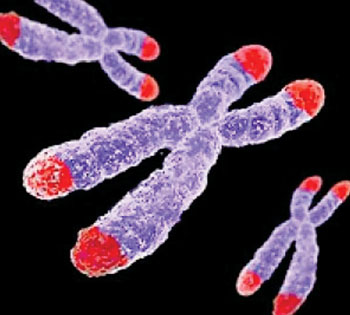Chromosome Buffers Improve Understanding of Melanoma
By LabMedica International staff writers
Posted on 02 Oct 2014
Buffers that guard against damage to the ends of chromosomes could hold the key to a better understanding of malignant melanoma, the deadliest form of skin cancer.Posted on 02 Oct 2014
The ends of chromosomes are protected from instability by tandem nucleotide repeats, known as telomeres and these telomeres shorten both with age and following exposures associated with cancer risk, such as smoking and ultraviolet (UV) irradiation.

Image: Telomeres at the end of the chromosomes protecting against DNA deterioration (Photo courtesy of Dr. Daniel Friedland MD).
An international team of scientists led by those at the University of Leeds (UK) investigated variants identified by the telomere meta-analysis in a genome-wide association study (GWAS) of melanoma. The study consisted of 11,108 case patients and 13,933 control patients from Europe, Israel, the USA, and Australia. The scientists concentrated on seven single nucleotide polymorphisms (SNPs) from the telomere meta-analysis.
In phase 1, samples were genotyped on the HumanHap300 BeadChip version 2 duo array with 317k tagging SNPs (Illumina; San Diego, CA, USA) and in France, cases were genotyped on the Illumina HumanCNV370k array. The phase 2 samples were genotyped on the Illumina 610k array.
The team created a score representing genetically-determined telomere length based on all the established telomere associated genes and found that this score was associated with melanoma risk. The one in four people predicted to have the longest telomeres are at 30% increased risk of developing melanoma compared to those one in four predicted to have the shortest telomeres.
Mark M. Iles, PhD, the led author of the study said, “For the first time, we have established that the genes controlling the length of these telomeres play a part in the risk of developing melanoma. More studies are needed to better understand the relationship between melanoma and telomeres, but learning more about how an individual's genetic telomere profile influences their risk developing melanoma may help us. It will improve our understanding of melanoma biology and gives us a target towards developing potential treatments as well as potentially helping shape advice on what behavioral changes people might make.” The study was published in the October 2014 issue of the Journal of the National Cancer Institute.
Related Links:.
University of Leeds
Illumina














